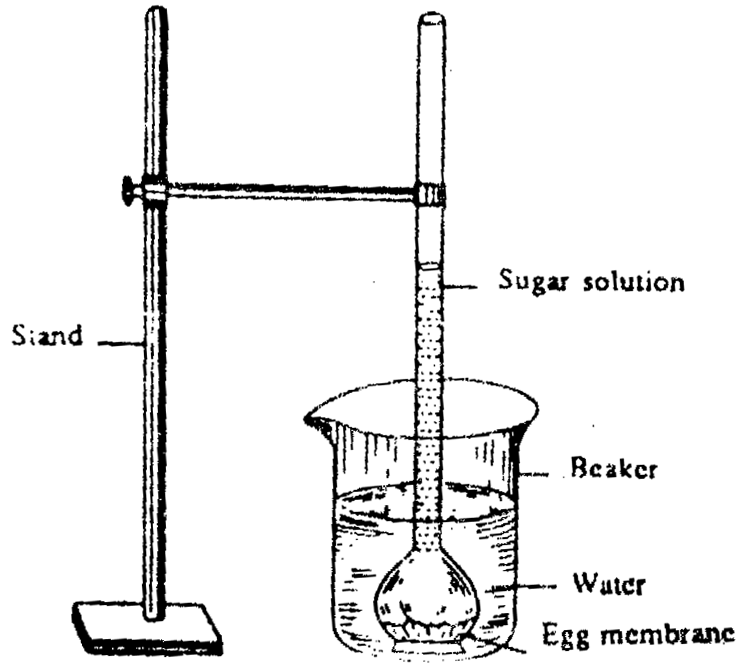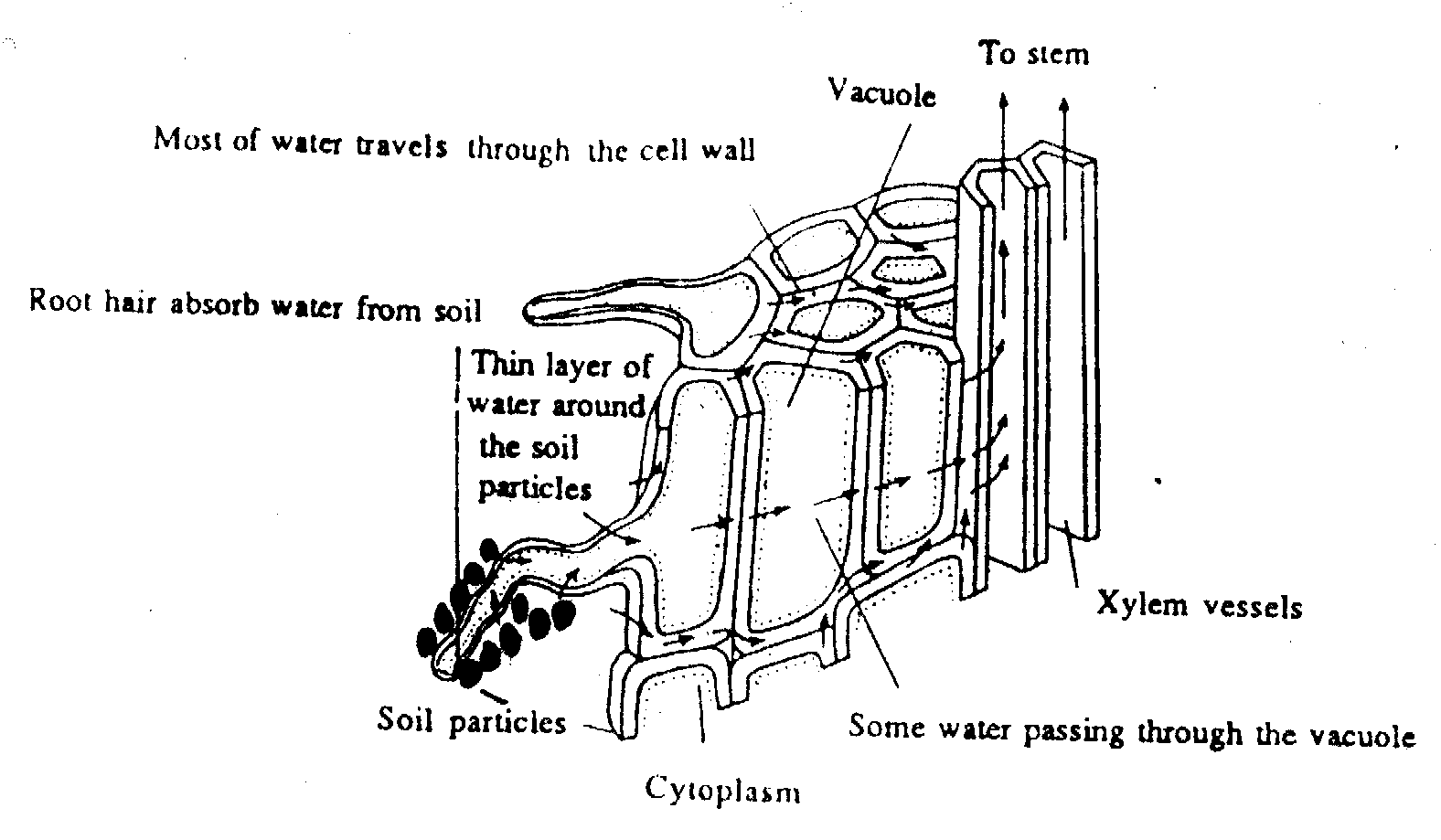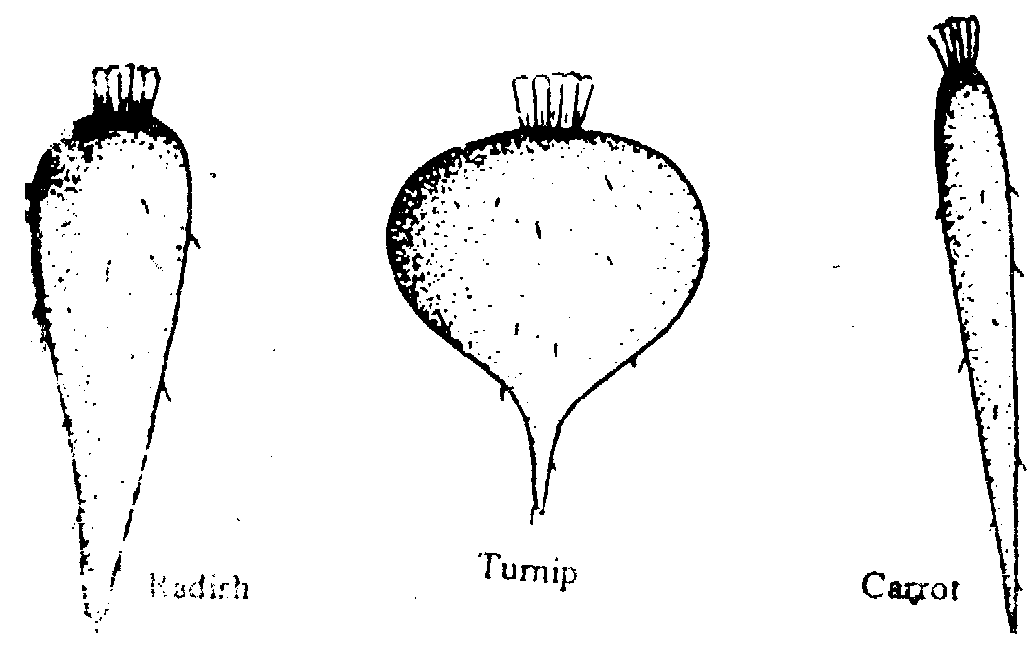|
|
|
TRANSPORT
IMPORTANCE OFTRANSPORTATION
Following are points on the importance of transport system.
DIFFUSION
It is the movement of molecules from the area of higher concentration towards the area of lower concentration or where they are absent.
EXAMPLE
If some carbon dioxide is released from a cylinder placed on one corner of the room the gas molecules will move about at random in the air after some time they will become evenly distributed throughout the room.
SIGNIFICANCE OF DIFFUSION
Exchange of respiratory gases across the cell membrane take place through diffusion.
OSMOSIS
Osmosis is the movement of solvent molecules from the area of higher concentration towards the area of lower concentration through the semipermeable membrane.
TYPES OF MEMBRANE
1. PERMEABLE MEMBRANE
Membrane which allows both solvent and solute molecules to pass through it. E.g., filter paper, cell wall in plant cell.
2. SEMIPERMEABLE MEMBRANE
Membrane which allows only small (solvent) molecules to pass through it is called semipermeable membrane. E.g., cell membrane.
3. IMPERMEABLE MEMBRANE
Membrane which doesn't allow any molecules to pass through it is called impermeable membrane.
EXPERIMENT DEMONSTRATING THE PROCESS OF OSMOSIS
METHOD
Take a beaker. Fill it with water. Take a thistle funnel lined with semipermeable membrane. Fill 35% sugar solution in thistle funnel and place it in a beaker. Fix the thistle funnel with iron stand. Mark the level of solution in the stem of thistle funnel. Leave the apparatus for some time.

OBSERVATION
After some time it will be noticed that the level of sugar solution will rise in the stem of thistle funnel.
RESULT
The rise in level of sugar solution in thistle funnel is due to the movement of water molecules from beaker into the thistle funnel by the process of osmosis.
ENDOSMOSIS
Movement of solvent molecules from outside to inside of the cell is called endosmosis.
EXOSMOSIS
Movement of molecules from inside to outside the cell is called exosmosis.
IMPORTANCE OF OSMOSIS
TURGOR
The swelling of cell of plant due to excess of water is called turgor. Inside the cell wall there is a cell membrane which is semipermeable membrane. When concentration of water around cell is high endosmosis take place and cell become turgid. In this condition vacuole and protoplasmic concents exerts pressure on cell wall. This pressure is called turgor pressure.
IMPORTANCE OF TURGOR PRESSURE
ABSORPTION OF WATER BY ROOTS
Absorption of water takes place through the root hairs. Root hairs are microscopic outgrowths of epidermal layer of root. Water is absorbed by root hairs and brought to the epidermal layer. From epidermal layer it is carried to the cortex and from here it is brought to the xylem vessels. Through xylem vessels it is brought to the stem and leaves.

ASCENT OF SAP
Conduction of water and mineral salts from root to the arial parts of the plant is called ascent of sap.
PATH OF ASCENT OF SAP
Ascent of sap takes place through xylem vessels.
FORCES RESPONSIBLE FOR ASCENT OF SAP
1. ROOT PRESSURE
Pressure exerted by the cortical cells of the root on sap. It is weak force and contribute weak force for ascent of sap.
2. TRANSPIRATION PULL
as the result of loss of water molecules from stomata spongy mesophyll become less saturated as the result vacuum is created this contribute for a suction pressure and water molecules move from xylem to the spongy mesophyll. In this way water molecules move from root to the leaves in a form of chain of water molecules. Transpiration pull is strongest known force responsible for the ascent of sap.
TRANSPIRATION
Loss of water vapours from the arial parts i.e. (leaves) of the plant is called transpiration.
SIGNIFICANCE OF TRANSPIRATION
FACTORS WHICH AFFECT RATE OF TRANSPIRATION
1. TEMPERATURE
Rate of transpiration is directly proportional to the temperature of surroundings.
2. LIGHT
Rate of transpiration is directly proportional to the light.
3. HUMIDITY
Rate of transpiration is inversely proportional to the humidity.
4. WIND
Rate of transpiration is directly proportional to the velocity of wind.
TRANSPORT OF FOOD IN PLANTS
Translocation is the process by which synthesized food is transported from leaves to the different parts of the plant body. This process takes place through the phloem tissues.
Synthesized food is transported in the form of glucose and amino acids. This food is stored in different parts of the plant like root, stem, leaf and fruits. In addition this food is used in assimilation and cellular respiration.
STORAGE OF FOOD IN PLANTS
Plants manufacture excess amount of food and store it in the different parts of the plant body. Examples,
1. ROOT
In turnip, radish, carrot and beet plants excess food is stored in roots.
2. STEM
In potato and ginger food is stored in stem.
3. SEEDS
Food is also stored in seeds of plant which is used by embryo during development.

Stored food is utilized by plants during autumn as leaves fall in autumn and food cannot be prepared by plants.
TRANSPORTATION IN ANIMALS
FUNCTIONS OF TRANSPORT SYSTEM
FUNCTIONS OF BLOOD
Following are some points in significance of transport system.
 STRUCTURE OF
HEART
STRUCTURE OF
HEART
Heart is muscular organ. It is located in thoracic cavity between two lungs. It is enclosed in a membrane called pericardium. Between the two layers of pericardium there is a fluid called fiencardial fluid.
CHAMBERS OF THE HEART
Human heart consist of four chambers.
INTERNAL STRUCTURE OF THE HEART
Two atria are separated by interatrial septum, and two ventricals are separated by interventricular septum.
Valves are special arrangement in heart which allows unidirectional blood flow and prevent back flow of the blood. Right atrioventricular valve incurpid valve lies between right atrium and right ventrical. Left atrioventricular valve is situated between left atrium and left ventrical. Aortic valve situated at the junction of left ventrical and aorta. Pulmonary valve is situated at the junction of right ventrical and pulmonary trunk.
WORKING OF HEART
1. SYSTOLE
Contraction of chamber of heart.
2. DIASTOLE
Relaxation of chambers of the heart.
Blood from all parts of the body is collected in right atrium. At same time left atrium receive oxygenated blood from lungs through pulmonary veins. This is diastolic phase of atria. After this both atria contract and blood is pumped to the respective ventricles through biaspid and triaspid valves. This is systolic phase of atria.
After this both ventricles contract and blood is pumped to lungs from right ventrical and to all parts of the body from left ventrical. This is ventricular systole.
ARTERIES
These are vessels which bring blood from heart to the different parts of the body.
VEINS
These are blood vessels which bring blood from organs to the heart.
CAPILLARIES
These are microscopic vessels lined by single layer of epithelium. Exchange of different substances can easily take place through capillaries.
PULSE RATE
When blood is forced in aorta during ventricular systole it expand arterial walls this expansion is called pulse. The normal pulse rate is 72 per minute.
BLOOD PRESSURE
Pressure exerted by blood on blood vessels. During ventricular systole its value is 120 mm Hg and during ventricular diastole its value is 80 mm Hg. The pulse pressure is 120- 80 = 40 mm Hg.
BLOOD
Blood is composed of plasma and formed elements.
PLASMA
It consist of water, electrolytes, enzymes, hormones, vitamins, nutrients, fibrinogen, etc.
FORMED ELEMENTS
Formed elements consists of following parts.
RBC (RED BLOOD CELLS)
They are biconcave disc like cells. They are non nucleated cells. RBCs are formed in bone marrow. They contain a pigment called haemoglobin which carry oxygen.
WBC (WHITE BLOOD CELLS)
They are found in different sizes. They are nucleated. WBCs provide protection to our body from disease causing factors like bacteria, virus etc.
PLATELETS
These are fragments of cells. They are smaller in size. They play important role in blood clotting.
BLOOD GROUPS
In ABO system there are four blood groups.
BLOOD GROUP A
Person having blood group A has antigen A and antibody B.
BLOOD GROUP B
Person having blood group B has antigen B and antibody A.
BLOOD GROUP AB
Person having blood group AB has antigen AB and no antibody.
BLOOD GROUP O
Person having blood group O has no antigen but has antibody AB.
IMPORTANCE OF DETERMINATION OF BLOOD GROUP
Determination of blood group is essential for blood transfusion.
ANTIGENS
Antigens are found on the surface of RBC. They stimulate the formation of antibodies. They are protein in nature.
ANTIBODIES
They are found in plasma. They provide defense to our body against foreign antigen.
IMMUNITY
It is tendency or ability of body to resist against diseases.
VACCINES
Incolation of certain antigen (virus and bacteria) to induce production of antibodies to increase immunity against disease.
SERUM
Watery fluid separated from clotted blood and free from blood cells and fibrin.
|
Copyright © 2001 Epoint web center. All Rights Reserved. |